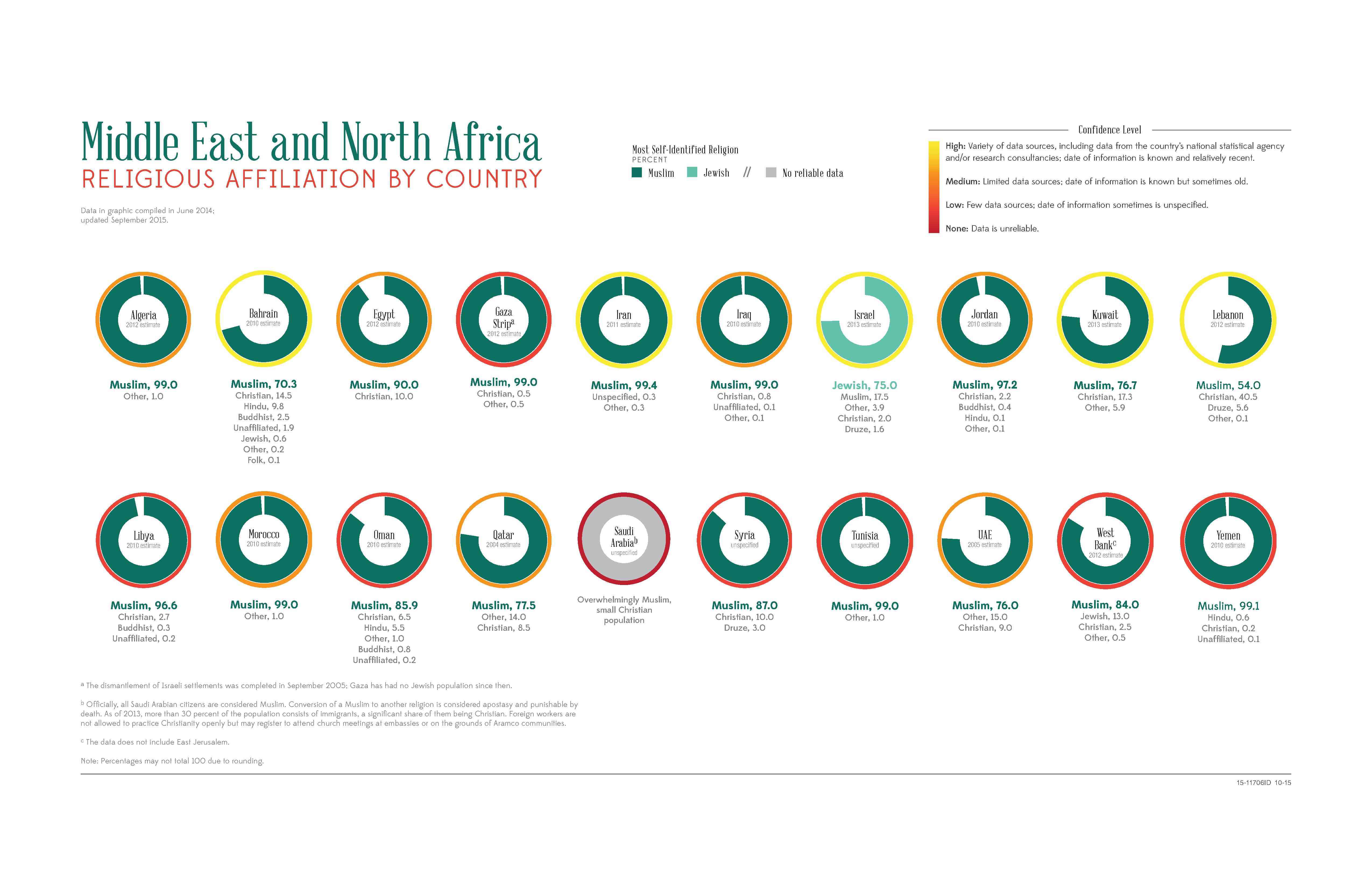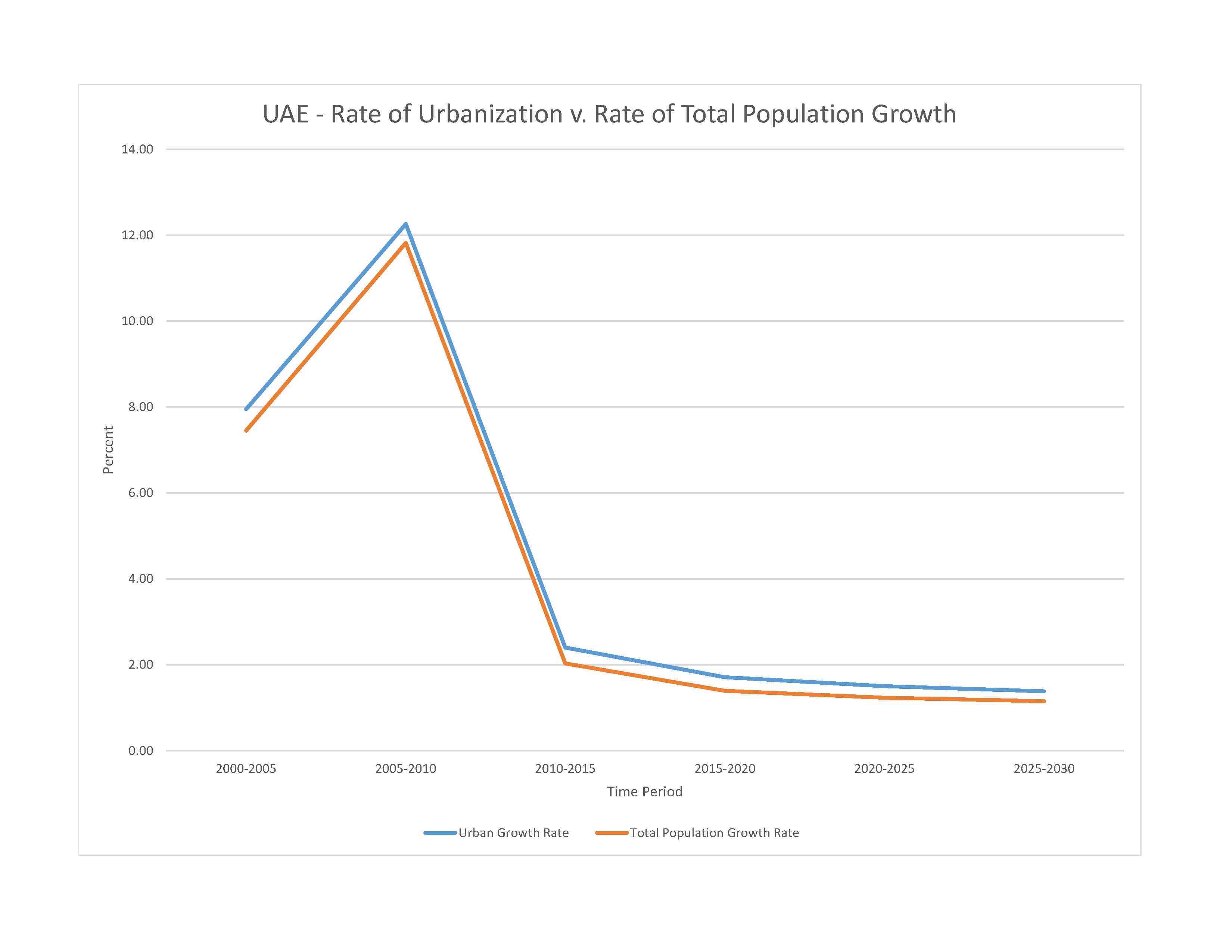
9,973,449 (2023 est.)
note: the UN estimated the country's total population was 10,082,000 as of 2022; immigrants make up 88.1% of the total population, according to UN data (2020)
noun: Emirati(s)
adjective: Emirati
Emirati 11.6%, South Asian 59.4% (includes Indian 38.2%, Bangladeshi 9.5%, Pakistani 9.4%, other 2.3%), Egyptian 10.2%, Filipino 6.1%, other 12.8% (2015 est.)
note: data represent the total population; as of 2019, immigrants make up about 87.9% of the total population, according to UN data
Arabic (official), English, Hindi, Malayalam, Urdu, Pashto, Tagalog, Persian
major-language sample(s):
كتاب حقائق العالم، المصدر الذي لا يمكن الاستغناء عنه للمعلومات الأساسية (Arabic)
The World Factbook, the indispensable source for basic information.
Arabic audio sample:
Muslim 74.5% (official) (Sunni 63.3%, Shia 6.7%, other 4.4%), Christian 12.9%, Hindu 6.2%, Buddhist 3.2%, agnostic 1.3%, other 1.9% (2020 est.)
note: data represent the total population; as of 2020, immigrants make up about 88.1% of the total population, according to UN data

0-14 years: 16.23% (male 829,266/female 789,187)
15-64 years: 81.77% (male 5,840,920/female 2,314,683)
65 years and over: 2% (2023 est.) (male 15,1340/female 48,053)
total dependency ratio: 20.3
youth dependency ratio: 18.2
elderly dependency ratio: 2.1
potential support ratio: 47.3 (2021 est.)
total: 35.7 years (2023 est.)
male: 37.9 years
female: 29.9 years
0.58% (2023 est.)
10.8 births/1,000 population (2023 est.)
1.6 deaths/1,000 population (2023 est.)
-3.4 migrant(s)/1,000 population (2023 est.)
population is heavily concentrated to the northeast on the Musandam Peninsula; the three largest emirates - Abu Dhabi, Dubai, and Sharjah - are home to nearly 85% of the population
urban population: 87.8% of total population (2023)
rate of urbanization: 1.5% annual rate of change (2020-25 est.)

3.008 million Dubai, 1.831 million Sharjah, 1.567 million ABU DHABI (capital) (2023)
at birth: 1.06 male(s)/female
0-14 years: 1.05 male(s)/female
15-64 years: 2.52 male(s)/female
65 years and over: 3.15 male(s)/female
total population: 2.16 male(s)/female (2023 est.)
9 deaths/100,000 live births (2020 est.)
total: 5.1 deaths/1,000 live births (2023 est.)
male: 5.6 deaths/1,000 live births
female: 4.5 deaths/1,000 live births
total population: 79.8 years (2023 est.)
male: 78.4 years
female: 81.2 years
1.62 children born/woman (2023 est.)
0.79 (2023 est.)
N/A
improved: urban: N/A
rural: N/A
total: 100% of population
unimproved: urban: N/A
rural: N/A
total: 0% of population (2020 est.)
5.5% of GDP (2020)
2.6 physicians/1,000 population (2019)
1.4 beds/1,000 population (2017)
improved: urban: N/A
rural: N/A
total: 100% of population
unimproved: urban: N/A
rural: N/A
total: 0% of population (2020 est.)
31.7% (2016)
total: 2.03 liters of pure alcohol (2019 est.)
beer: 0.21 liters of pure alcohol (2019 est.)
wine: 0.14 liters of pure alcohol (2019 est.)
spirits: 1.65 liters of pure alcohol (2019 est.)
other alcohols: 0.02 liters of pure alcohol (2019 est.)
N/A
72.4% (2023 est.)
3.9% of GDP (2020 est.)
definition: age 15 and over can read and write
total population: 98.1%
male: 98.8%
female: 97.2% (2021)
total: 16 years
male: 15 years
female: 17 years (2020)
NOTE: The information regarding United Arab Emirates on this page is re-published from the 2024 World Fact Book of the United States Central Intelligence Agency and other sources. No claims are made regarding the accuracy of United Arab Emirates 2024 information contained here. All suggestions for corrections of any errors about United Arab Emirates 2024 should be addressed to the CIA or the source cited on each page.
This page was last modified 04 May 24, Copyright © 2024 ITA all rights reserved.